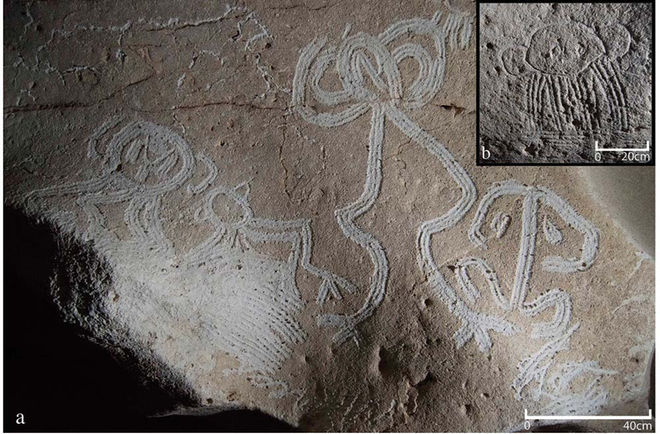Puerto Rico’s Mona Island is Puerto Rico’s third largest island. Known for its intricate network of caves, one of Mona’s caves was hiding something profound. The most recent discovery within one of these ominous caves is a series of carvings that were done by indigenous and European colonizers.

Photo: Live Science
These rare cave markings have given archaeologists a glimpse at what the encounter between the Europeans and indigenous people might have been like. Experts believe that this specific encounter took place around 500 years ago.
Jago Cooper, from the British Museum, led this excavation alongside Alice Samson. Their group spent years working working on the artwork that fills the ancient caves of Mona Island. The team surveyed around 30 of the 70 caves during this time. After years of research, Cooper and Samson’s team found evidence of a pre-Columbian presence within the caves. Thousands of indigenous carvings were documented, many of these carvings included animals or creatures similar to animals, geometric shapes, and ancestral beings.
A portion of these drawings have been dated back to the 14th century due to certain characteristics. One particular characteristic is called finger fluting. This means that whomever was carving the drawing would draw one or more fingers across the limestone surface. Sometimes tools were used to achieve the same look.
Inside one particular cave, the archaeological team found an interesting series of carvings. These carvings were unlike the previous carvings that they’d been studying for years. Right next to the indigenous art, Christian symbols (including crosses and Chirstograms), names, and even dates have been carved onto the walls. Archaeologists have also found a series of Bible versus that have been carved in Spanish or Latin. The phrases are, “dios te perdone,” meaning “may God forgive you.” The other being “verbum caro factum est,” which translates to “and the Word was made flesh.”
One of the specific names that has been scribbled onto the wall is from a man named Fancisco Alegre. Francisco traveled to the Caribbean from Spain in the 1530’s and eventually became one of the royal officials in Puerto Rico. The cave that holds these unique carvings isn’t an easy one to reach. Archaeologists assume that the European travelers would have need the indigenous people’s help reaching it. One must climb to the top of a steep cliff and squeeze through a small entrance to enter the cave.
Some experts believe that it is possible for indigenous people to have draw these crosses inside the cave. Specifically the ones that had converted to Christianity during this time. Others believe that the carvings may have been done by the Europeans who were questioning their spirituality. One particular phrase that was carved into the wall “plura fecit deus,” translates to “God made many things.” Experts believe that this might have been done as an expression of disbelief. One particular expert states that these symbols could possibly “express the theological crisis of the New World discovery.”
You can read more about these findings in this months issue of Antiquity.

